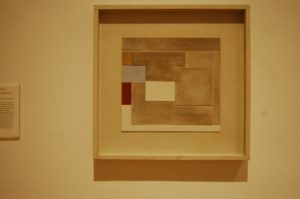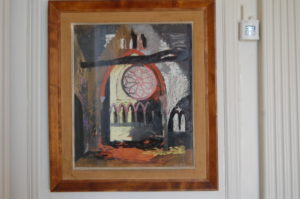Turner was not the only artist to have work collected by the third Lord Egremont, who also purchased works by Gainsborough, Reynolds and Flaxman. Egremont was, however, his patron, offering him accommodation as well as commissions. Turner’s response is among the finest in an extensive display throughout the great house.
Additionally, Turner was inspired by the landscape of the park and pleasure grounds that spread over 700 acres, in part designed by Capability Brown fifty years before Turner’s visit. The lake features in at least one of the paintings, where the 17th century house is seen across its water. In the 1820s the North Gallery was added by Lord Egremont to house the collection, which includes important Dutch and Flemish paintings as well as sculpture.
Turner’s contribution is seen from the second room one enters and continues with, on Monday afternoons, one work in a family room not otherwise open. There is no attempt made to isolate them, so a Turner landscape is hung beneath a portrait of a sixteenth century aristocrat. Nor are the landscapes restricted to Petworth or even Sussex. Eton, the Thames and Windsor Castle are also to be seen along with some unspecified locations. In almost all of course is the unique handling of light, particularly at sunrise or sunset.
Naturally, visitors look at all the works displayed, unless they have leisure to view one particular artist or period exclusively. It does help, though, in recalling or reviewing Petworth, to concentrate. Hence this view of Turner, with others as bonus because they happen to fit into the same view.
While most have the angled light characteristic of Turner, one seascape is rather more conventional. Nonetheless the handling of paint is accomplished. I am reminded of the story of Turner’s rivalry with Constable, when both had submitted seascapes to the Royal Academy. Turner had been incensed by a large Constable work and returned on varnishing day, when no additional painting should have been possible before the opening, to add an eye catching bright red buoy to his foreground, with the result that Constable’s work was largely ignored.
Not the most moral of men but a superbly atmospheric painter.










